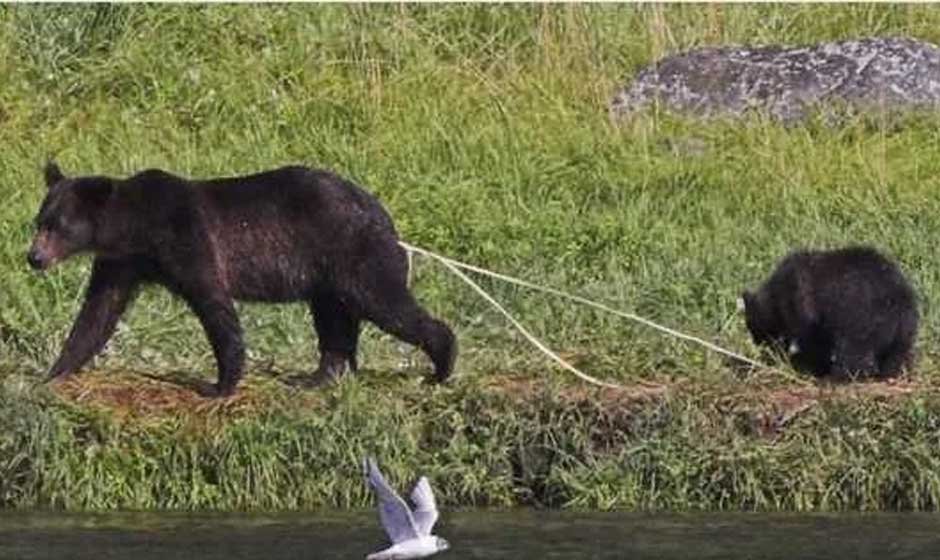Table of Contents
ToggleIntroduction
In the vast and often mysterious wilderness, life unfolds in countless ways, many of which remain hidden from our everyday view. Among the most intriguing aspects of wildlife are the complex relationships between different species, including the less glamorous but equally vital interactions between hosts and parasites. One such compelling, and at times startling, phenomenon involves bears with tapeworms.
This article invites you to explore the world of bears and their parasitic companions, the tapeworms. We’ll uncover how these resilient parasites become an integral part of a bear’s life, their potential effects on these magnificent creatures, and what these observations teach us about the raw beauty and harsh realities of the natural world.
The Unseen Inhabitants: What are Tapeworms?
Tapeworms, known scientifically as Cestoda, are a fascinating class of parasitic flatworms. They make their home in the digestive systems of various vertebrates, including bears. These remarkable organisms are easily recognized by their long, segmented bodies, which can comprise thousands of individual units called proglottids.
Each proglottid is essentially a reproductive factory, designed to produce and release eggs, which are then shed through the host’s feces. Lacking a digestive system of their own, tapeworms are masters of absorption, drawing all their necessary nutrients directly from the host’s intestine.
How Bears Acquire Tapeworms: The Food Chain Connection
For bears, especially those thriving in fish-rich environments like Alaska, acquiring tapeworms is a common occurrence, deeply tied to their diet. The most frequent culprit is the broad fish tapeworm (Diphyllobothrium latum), a parasite with an intricate life cycle that relies on aquatic hosts.
When a bear consumes raw or insufficiently cooked fish that harbor tapeworm larvae, these tiny invaders embark on a journey. Once inside the bear’s intestines, they mature into adult tapeworms. Salmon, a dietary cornerstone for many bear species, often serves as a primary vehicle for this parasitic transmission.
Symptoms and Impact: Do Tapeworms Harm Bears?
While the sight of a bear trailing a long tapeworm can be quite shocking, it’s important to understand that these parasites typically do not inflict severe harm on their ursine hosts. Bears have co-evolved with these internal guests over millennia, developing a remarkable degree of tolerance.
Nevertheless, in certain instances, particularly with heavy infestations, a bear might experience subtle symptoms such as nutrient deficiencies, a noticeable loss of weight, or general gastrointestinal discomfort. The most dramatic and publicly observed symptom, however, is the expulsion of lengthy segments of the tapeworm during defecation.
Notable Cases and Observations: When Tapeworms Become Visible
Encounters with bears expelling tapeworms have frequently captured widespread attention, often going viral through captivating videos and photographs. These striking observations usually occur when a bear passes stool, revealing a surprisingly long, pale, ribbon-like parasite emerging from its body.
Such events vividly illustrate the incredible size these parasites can achieve, sometimes stretching to an astonishing 30 feet or more within a bear’s digestive tract. Despite their dramatic appearance, these expulsions are a perfectly natural, albeit visually arresting, phase in the tapeworm’s life cycle.
Human Implications: Safety for Hunters and Consumers
For humans, especially hunters and those who enjoy consuming bear meat, a clear understanding of these parasites is absolutely vital. While the broad fish tapeworm can indeed infect humans, this risk is entirely mitigated by properly cooking bear meat.
It is crucial to cook all bear meat thoroughly to an internal temperature of at least 145°F (63°C). This essential practice effectively destroys any potential parasites, ensuring that the consumption of wild game remains both safe and a pleasurable culinary experience.
Conclusion
The phenomenon of a bear with a tapeworm, though it might seem unsettling, serves as a powerful reminder of the intricate and often unforgiving realities of the natural world. It beautifully illustrates the continuous dance between predator, prey, and parasite, a fundamental aspect of ecological balance.
These observations provide invaluable insights into wildlife health, the delicate balance of ecosystems, and the profound importance of our responsible interaction with nature. By understanding these complex relationships, we gain a deeper appreciation for the rich and diverse tapestry of life that thrives in the wild.













